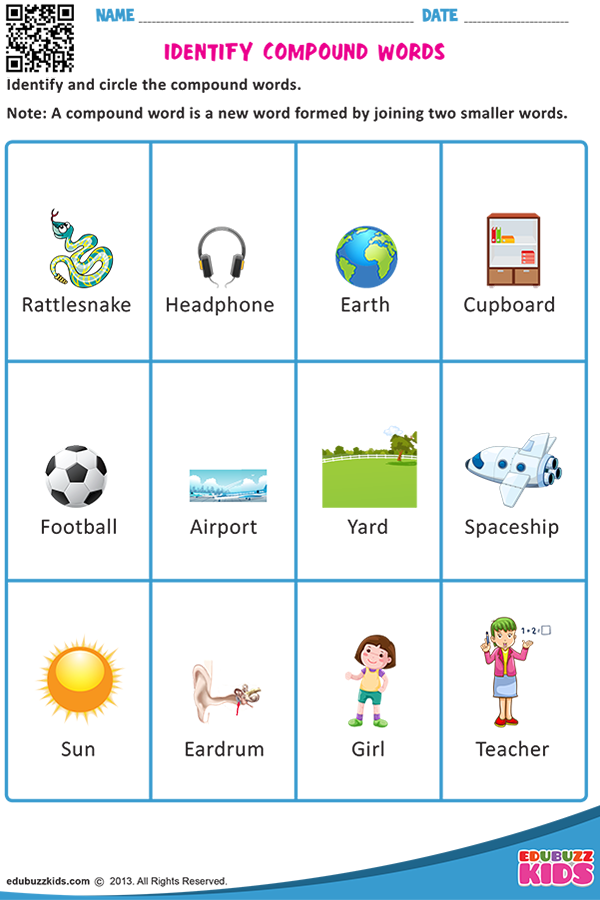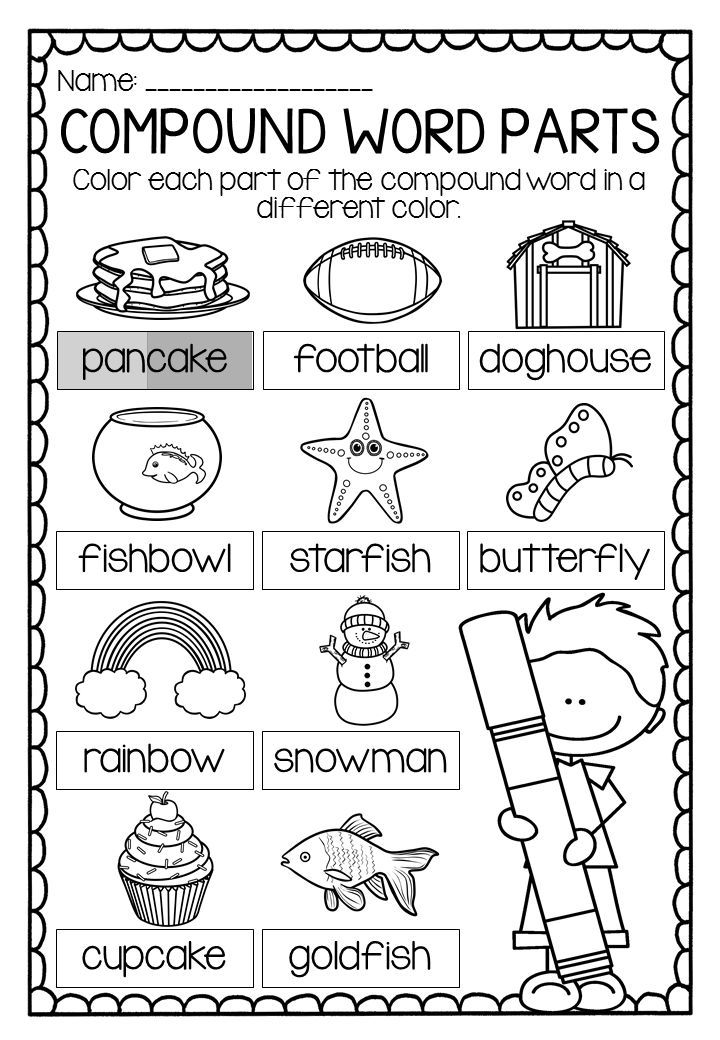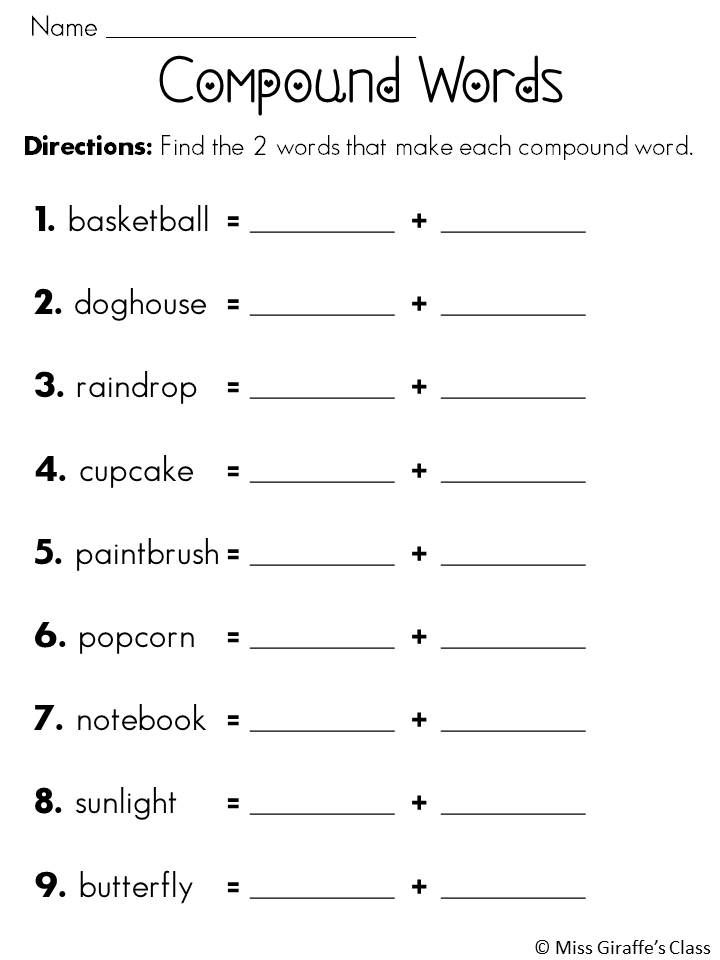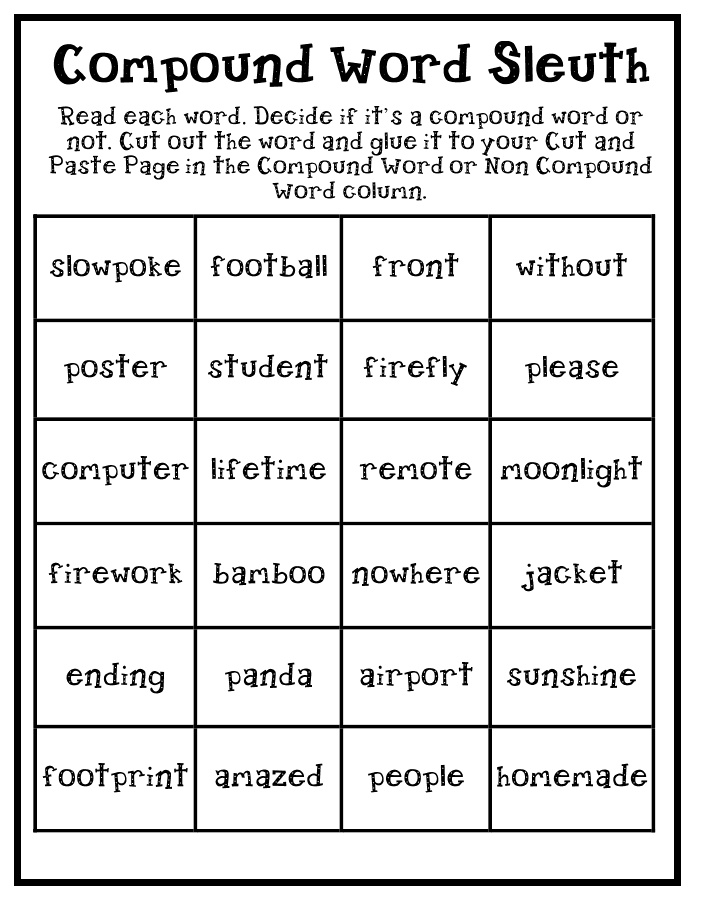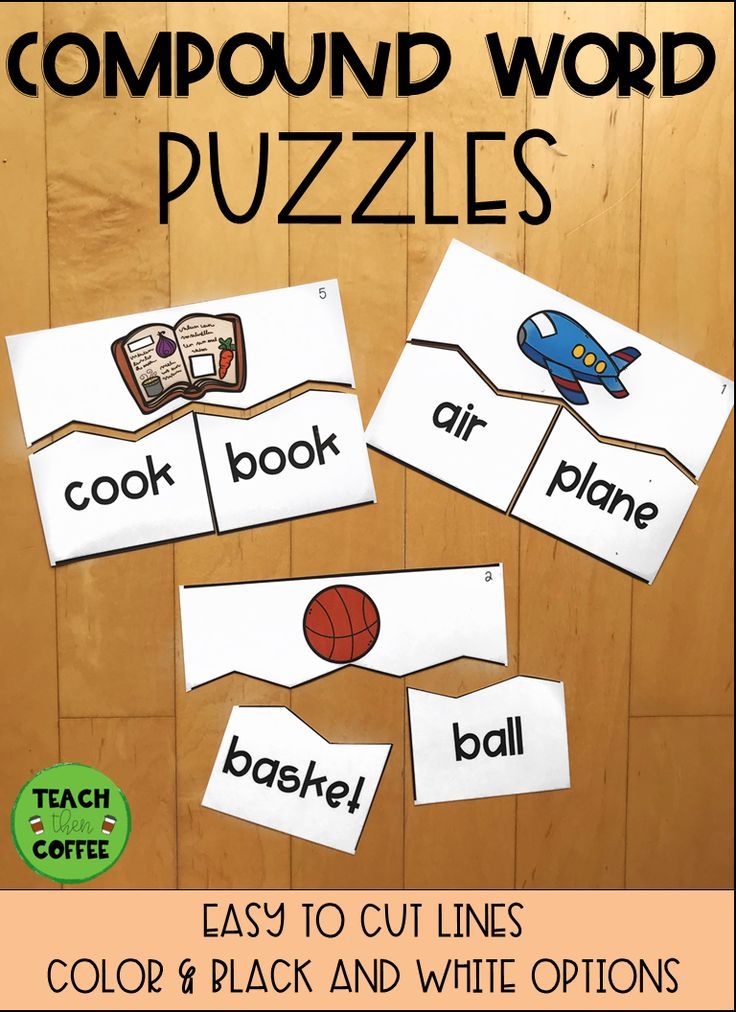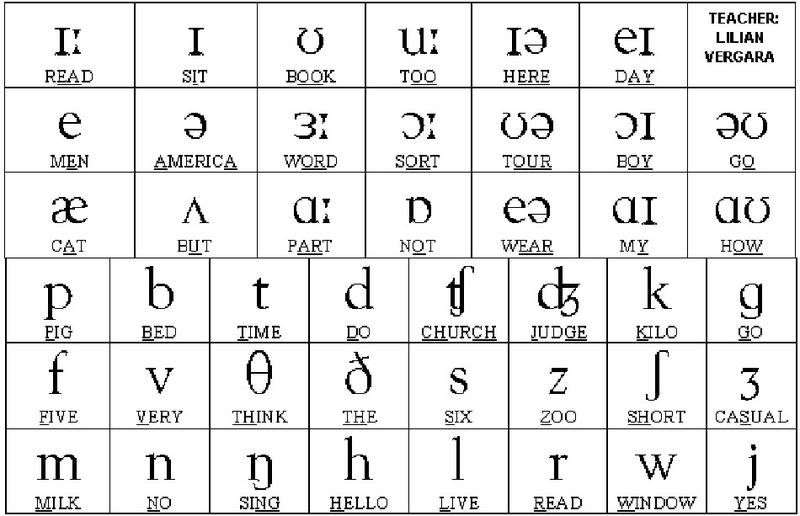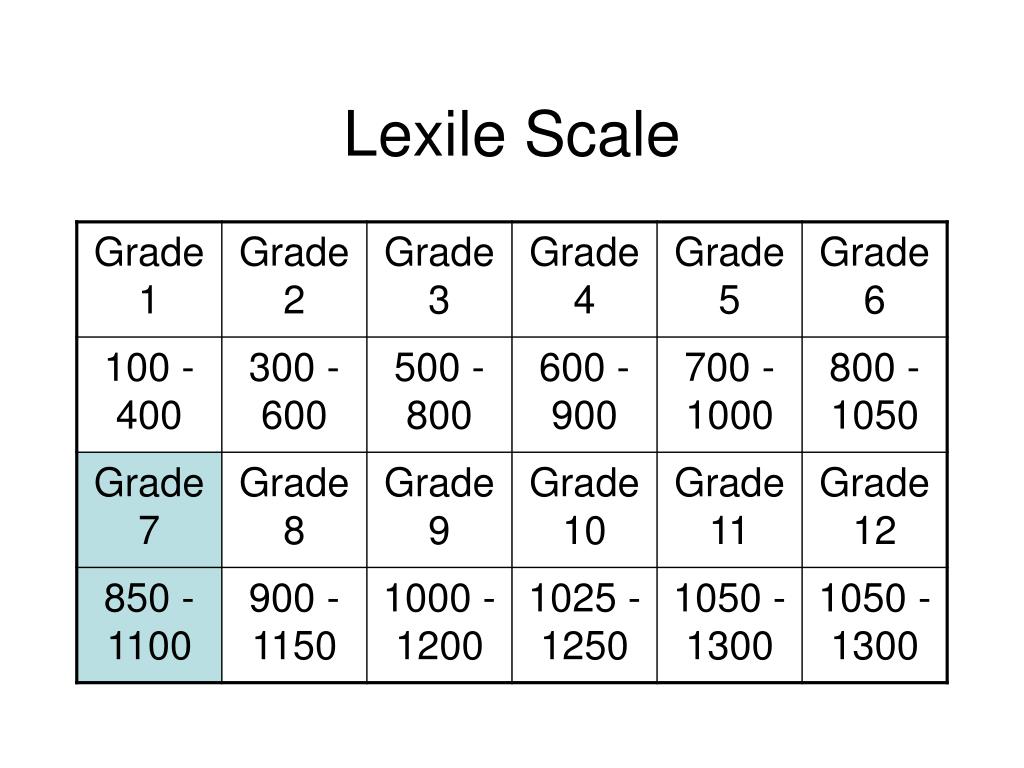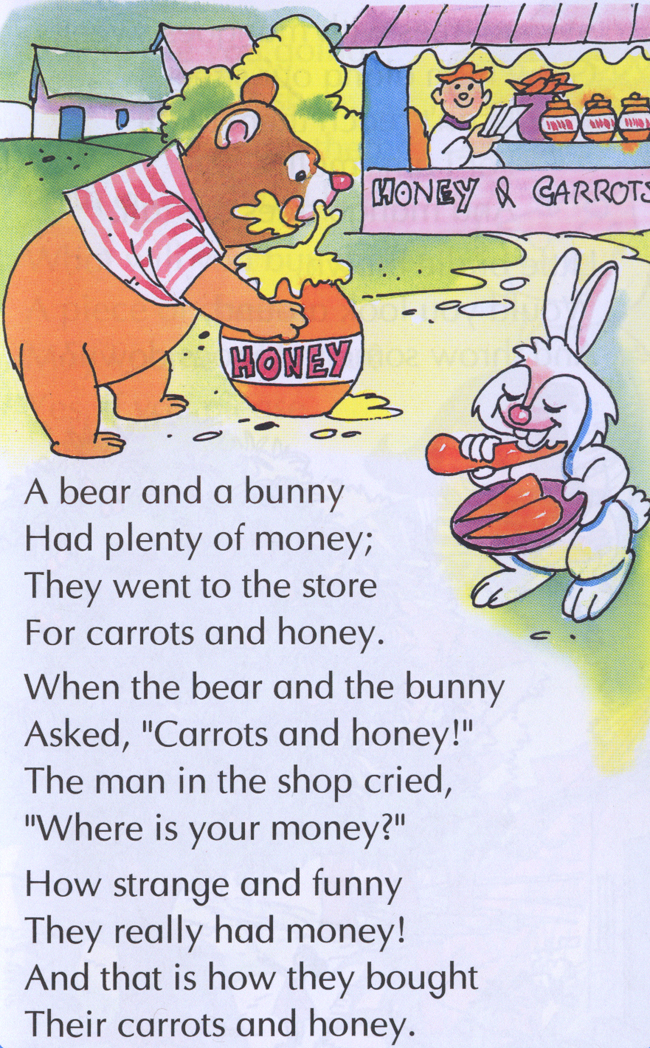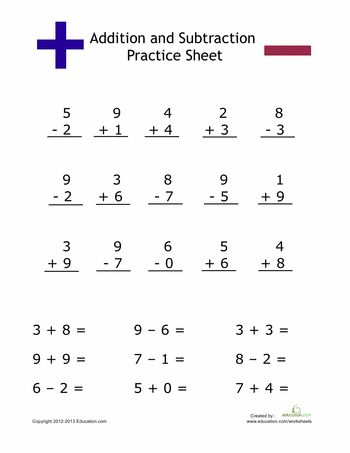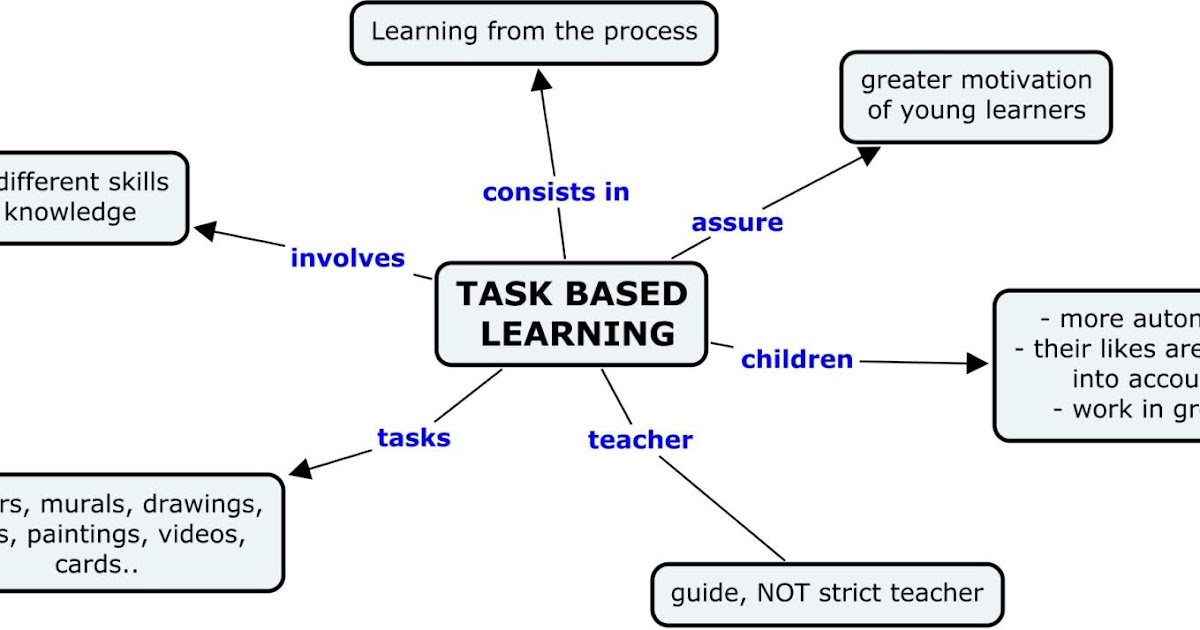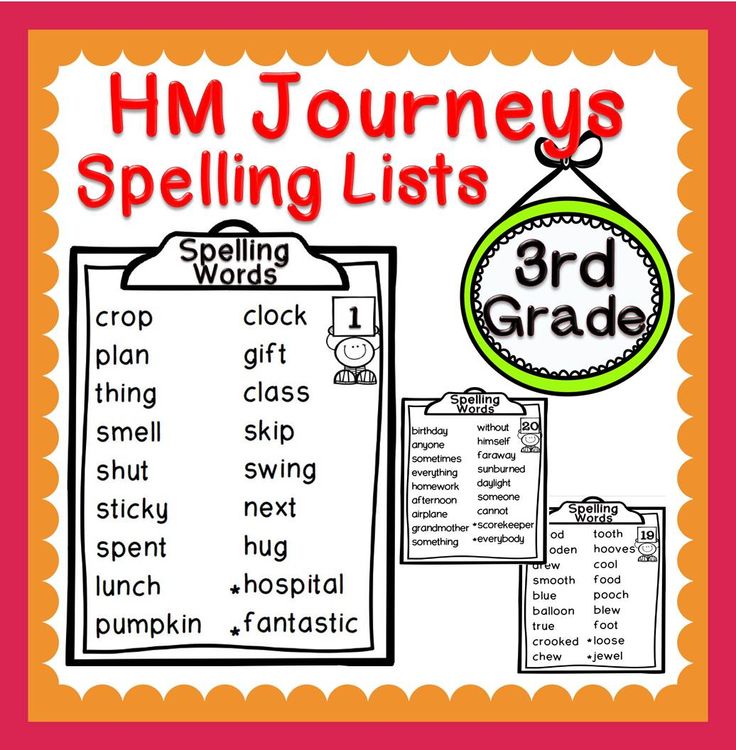Compound words activities
The 8 Best Compound Word Activities You Need to Try
What do meatballs, butterflies, and cowboys have in common? Not much unless you are teaching compound words to your students this week. This topic can be so fun to teach because of the many different ways you can approach it. Whenever possible, I try to make sure all types of learners’ needs can be met through teaching and activities. I put together a list of some of my favorite compound word activities.
Some of these activities are perfect to use in morning work or literacy stations after students know how to do them. Introduce them during whole group time and then let students keep practicing. These compound word activities were always a hit in my classroom. Most importantly, they helped my students really learn and understand this concept.
Before I jump into the list, I want to share the Compound Words Activities unit. It has everything you’ll need to be totally set for the week teaching compound words. It has a fun character and chant to help you introduce compound words. This unit also has a pocket book, flip book, and picture puzzles. It makes teaching compound words a breeze!
Amazon Affiliate links are used below at no cost to you.
1. Use a song to help you introduce or review compound words.
I love a fun song and video to either kick-off a new concept or to review as we learn. Dr. Jean’s Compound Boogie song is catchy and has great coordinating pictures. It has plenty of examples so your students will really get the hang of it. View it HERE.
2. Create an anchor chart for students to refer to.
A good anchor chart helps make learning visible and accessible to students. It serves a visual reference for students to look to. I love to make one with the definition of a compound word and a few examples. Then, as the week goes on, we’ll take a minute or two each day and add more examples as students come up with them.
Another fun anchor chart to make is compound words that are food. There are so many! I did this as interactive writing. My students loved adding to this chart!
3. Use read alouds for students to practice listening for compound words.
Read alouds are powerful tools that can help reach auditory learners, build background knowledge, and help grow strategic readers. Read alouds also help you integrate topics, like compound words, throughout the day. While you read, have students listen for compound words. You can have them raise their hands when they hear one. Here are a few books to use for compound words:
- Cloudy with a Chance of Meatballs by Judi Barrett
- If You Were a Compound Word by Trisha Speed Shaskan
- Thumbtacks, Earwax, Lipstick, Dipstick: What Is a Compound Word? By Brian P. Cleary
- Once There Was a Bull…Frog by Rick Walton
4. Use Duplo blocks for hands-on practice.
Write words on the blocks by using my favorite Post-It tape on shorter Duplo blocks.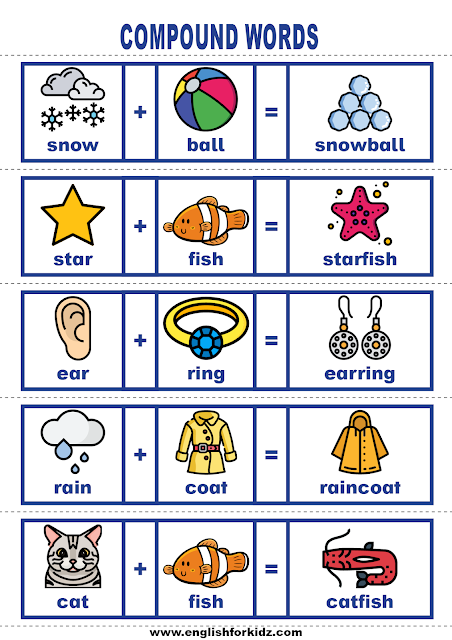 Have students place two short Duplo blocks together on a longer one to make a compound word. If you have very low-level readers, you can simply add pictures. You can have students write the new compound word they created and illustrate it if you want something you can check afterward.
Have students place two short Duplo blocks together on a longer one to make a compound word. If you have very low-level readers, you can simply add pictures. You can have students write the new compound word they created and illustrate it if you want something you can check afterward.
5. Implement self-checking puzzles.
Puzzles are such a great way for students to use their hands and brains while learning. Self-checking puzzles help students immediately see if their thinking is correct or not. Just write a word and draw a simple picture on each side of a notecard. For example, tree and house. Make a unique cut, like a zig-zag, and cut the notecard in half. Create several of these and mix them up.
In my Compound Word Activities Unit, I have this activity already done for you. Plus, there’s a recording page to make it easy for students to jot down their matches and for you to check them.
6. Introduce hands-on games to reinforce learning.
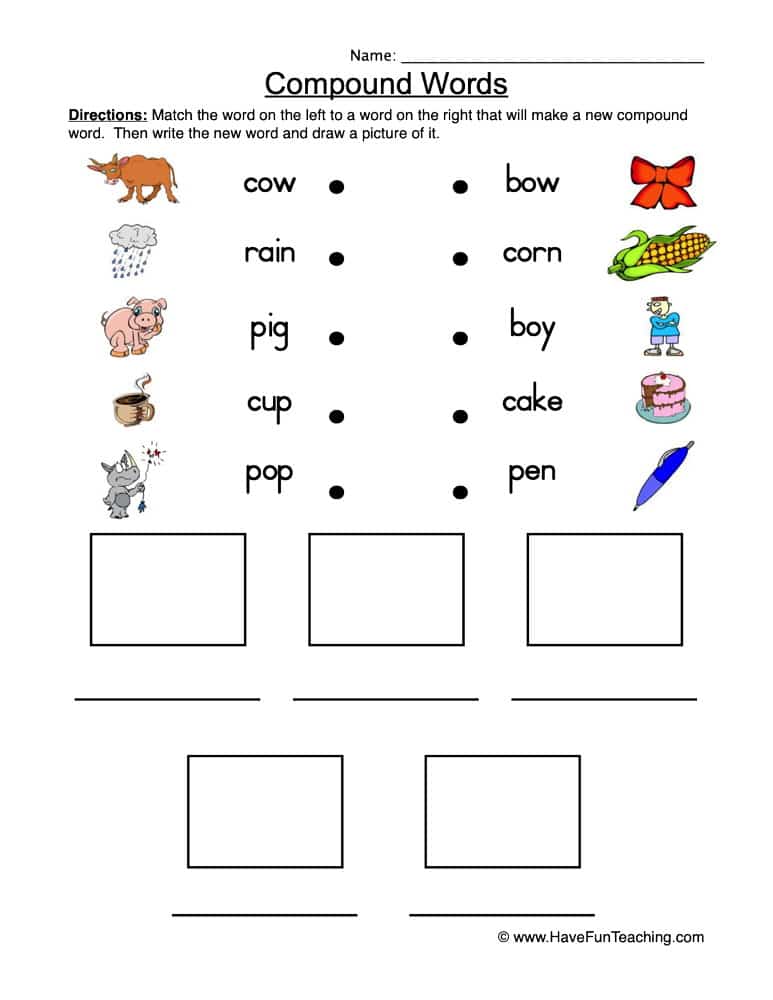
Most students in kindergarten, first grade, and second grade know how to play memory. Add a twist to the classic game with compound words. After you introduce this and model how to play, let students practice. Then, you can use it during morning work or in a word work or game literacy station.
- Make picture word cards for the compound word and its two individual words. For example, treehouse, tree, and house.
- Do this for several compound words.
- Next, flip the cards facedown.
- Students take turns flipping over three cards, saying/reading each one.
- Finally, if they flip over the three cards that go together (tree, house, and treehouse), they get to keep them and get a point.
7. Use online games.
There are several games online that you could use to let students practice identifying and making compound words. If you have iPads, you could use them in literacy stations. Check out what I found on YouTube.
- The Guess the Word Challenge is a video that shows two pictures.
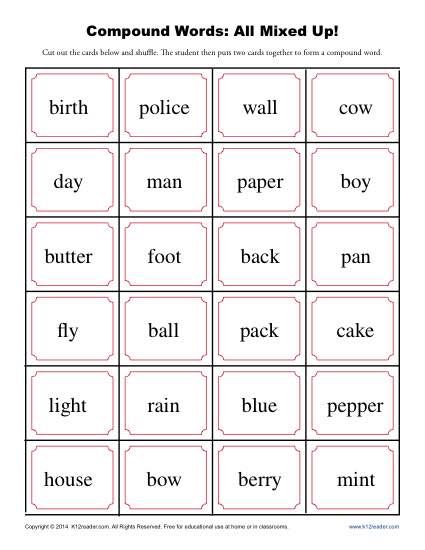 Students have to guess the compound word before the clock countdown ends.
Students have to guess the compound word before the clock countdown ends. - Similarly, The Compound Word Game is very similar. The main difference is this game does have some audio of someone saying the name of each picture, and the other game has no audio.
You can have students play two ways:
- Think, pair, and share the answer. Give a thumbs up or down if their partner got it correct.
- Let students write or draw the answers on whiteboards and hold them up to show you.
8. Sort compound words and not compound words.
Sorting is one of the higher-level compound word activities on Bloom’s Taxonomy. Show some examples of compound words with pictures and words that are not compound words. Have students sort them.
If you want this activity already all planned and done for you, my Compound Word Activities has this activity in it. Students make a pocket book and sort the pictures.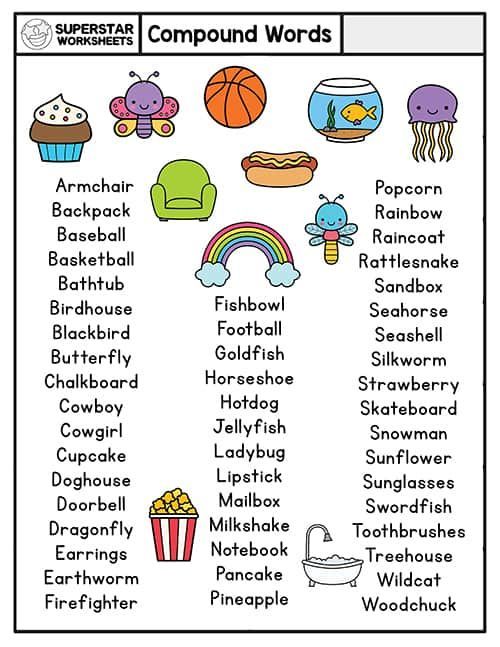 I love sorting this way because it’s interactive, and the students can take the pieces out, mix them up, and sort them again.
I love sorting this way because it’s interactive, and the students can take the pieces out, mix them up, and sort them again.
These eight compound word activities will be sure that the different types of students’ learning needs are met and support your ELL students, too. Remember that with any concept you teach, it’s important to add variety to your lessons and activities. As a result, students will be engaged and learn more effectively.
pin it
Do you have any must-do compound word activities? Leave a comment and let me know!
Shop This Post
Compound Word Activities Unit : This unit has interactive activities to help you teach compound words and help your students master this standard. It includes:
- Fun Compound Word Chant
- Compound Connection Puzzles (18 picture puzzles and recording sheets)
- Compound Connie (character used to help introduce the concept with activities)
- Pocket Book for Compound Word Sort
- Compound Flip Book (creating compound words)
Want to use the latest research to boost your readers during small groups? This FREE guide is packed with engaging ideas to help them grow!
Simple Hands-On Activities to Teach Compound Words
This post contains affiliate links.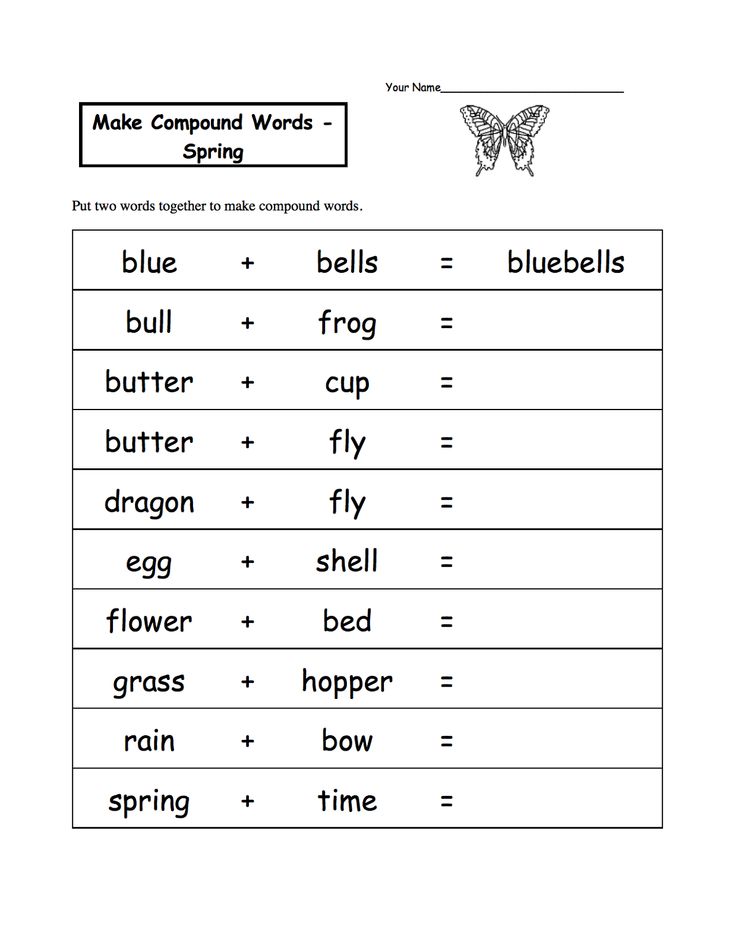 If you click & make a purchase, I receive a commission at no additional cost to you! Thanks! As an Amazon Associate, I earn from qualifying purchases. Read my full disclosure here.
If you click & make a purchase, I receive a commission at no additional cost to you! Thanks! As an Amazon Associate, I earn from qualifying purchases. Read my full disclosure here.
As elementary teachers and homeschooling parents, we know our kids want interactive games, hands-on learning opportunities, and activities…especially for those skills that are already less than exciting. And the truth is, many language arts skills are pretty dry. So, I’ve created 7 engaging activities to help you teach compound words to your kids.
What are Compound Words?
Compound words are just two simple words put together to form a new word. Obviously, compound words are larger than the individual words that form them, but helping kids differentiate between the words is vital to their understanding.
In the past, many of us felt confident that our kids understood compound words if they could construct one by joining two simple words. And while that is an essential part of the skill, we need to be teaching them about deconstructing compound words, too.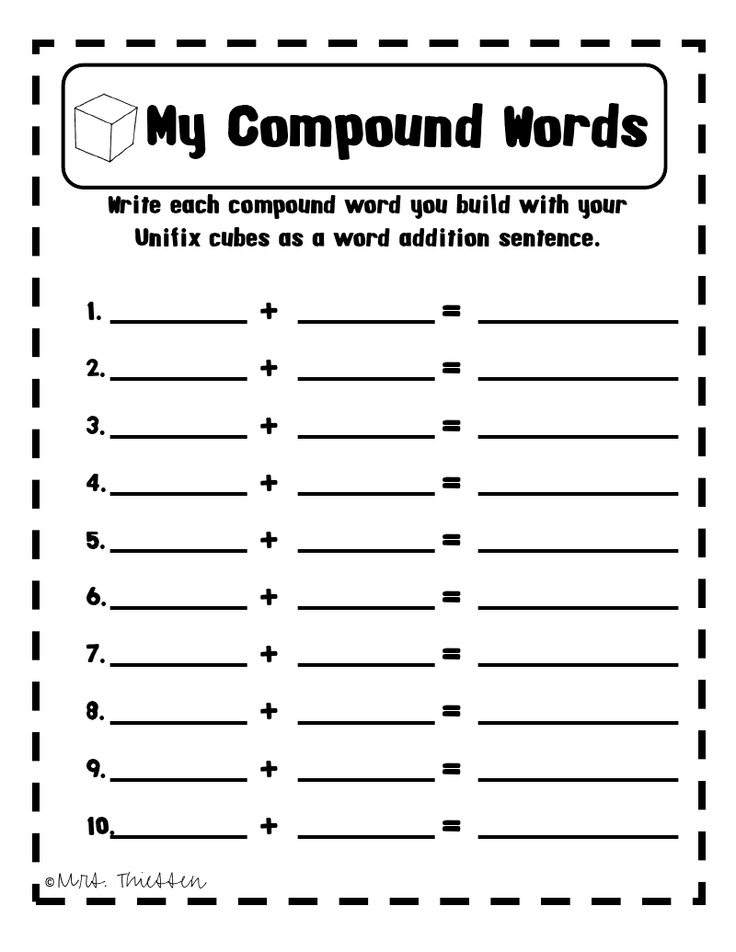
This will ensure that they have completed mastered the skill.
So I’ve put together a list of activities to teach compound words and effectively practice this skill that includes both constructing and deconstructing compound words.
7 Activities to Teach Compound Words
1. Incorporate Anchor Charts
Ok…so this may not seem like an activity, but it is fundamental to learning. ANY time you introduce a new skill, you need to give your kids a visual to help them understand what you are teaching. There is a multitude of research to support the fact that visual aids enhance the learning process.
While every child has unique learning styles, anchor charts prove to be vital to learning; and this is even more evident in the case of visual learners.
After a skill has been introduced and taught, the anchor charts need to be posted in a central location to ensure that those students who need them can reference them at any point in their learning journey.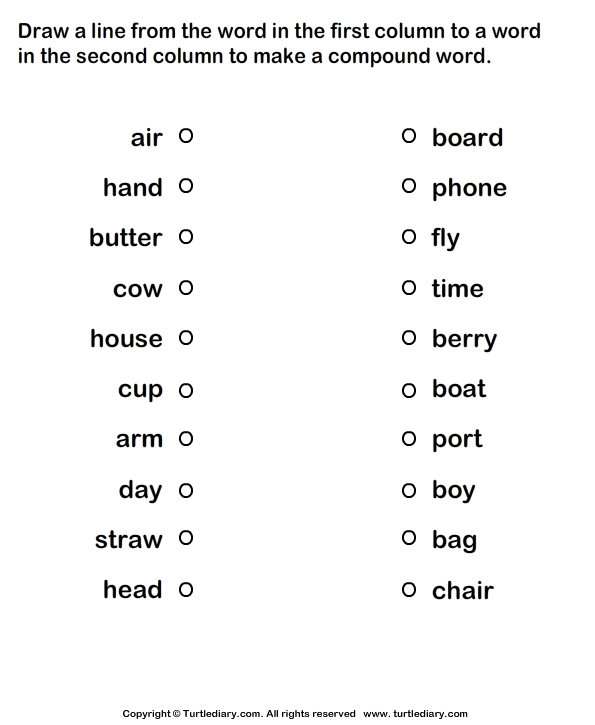
Your anchor chart should include a kid-friendly definition, an example sentence, and a visual representation of the skill. This guarantees that every unique learning style is met in one visual!
You can also print smaller versions of the anchor charts for kids to keep at their desks as a reference. This is a fantastic modification for those students who are visually-impaired.
Quick tip: I always print my anchor charts on cardstock and laminate them to increase the durability and guarantee that they last for several years!
2. Find the Compound Word (Sensory Bin Words)
Turning ANY activity into a game immediately makes it much more enticing for kids. In this activity, your kids will find pictures hidden in a sensory bin/box and match them to the corresponding sheet.
Simply print the color pictures, black and white pictures, or words (or a combination) and place them into a pencil box filled with dried beans, pasta, or rice. Your kids will search through the sensory bin or box for as many pictures as they can find.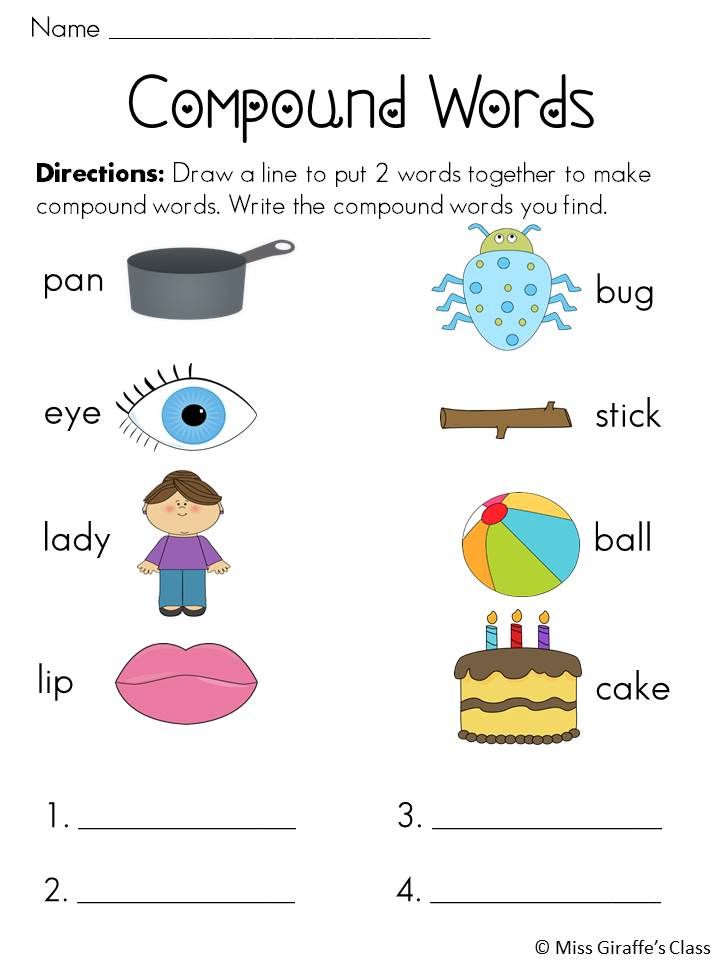
Each time they find a card in the sensory bin, they place it onto the matching sheet to see how many compound words they can create. Trust me…anytime digging is involved, your kids will LOVE IT!!!
Quick tip: To make this more of a challenge for your students, set a timer to see how many they can find in one minute. If that becomes easy, have your students search for the pictures while matching them to the word.
3. Compound Word Puzzles
Any time you can incorporate puzzles into a lesson, it will be a winner with your kids. And the truth is that puzzles allow kids to exercise spatial reasoning and hand-eye coordination while learning a new skill.
These puzzles have been designed to be automatically self-correcting which makes them the perfect addition to centers or stations.
Each compound word puzzle includes 3 pieces-2 simple words and a compound word. There are 3 different levels to give every child the opportunity to be successful.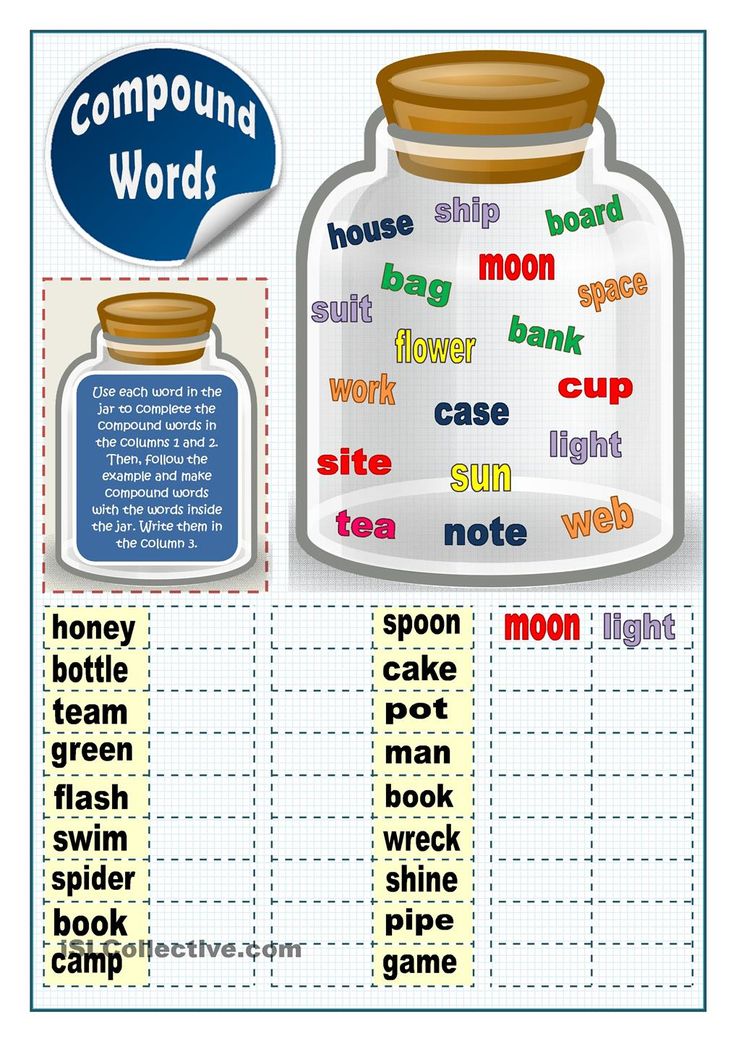
- The first design has pictures only.
- The second design has pictures and words.
- The third design has words only.
Kids will find the two simple words needed to construct the appropriate compound word.
Quick tip: To make the task more challenging, consider mixing the word and picture puzzles so that kids have to mix and match to create the compound word. (Just make sure to you include all of the necessary pieces.)
4. Cut & Paste the Compound Word
Being able to read simple words and then create compound words from those simple words is the basis for understanding compound words. In this activity, kids cut out all of the simple words and form compound words by gluing them into the boxes.
There are two options to meet the needs of your learners.
For younger kids (or those who need modifications), there’s a sheet that includes the traceable compound word. This provides them with a prompt to know which words to include in the boxes as well as the word to trace.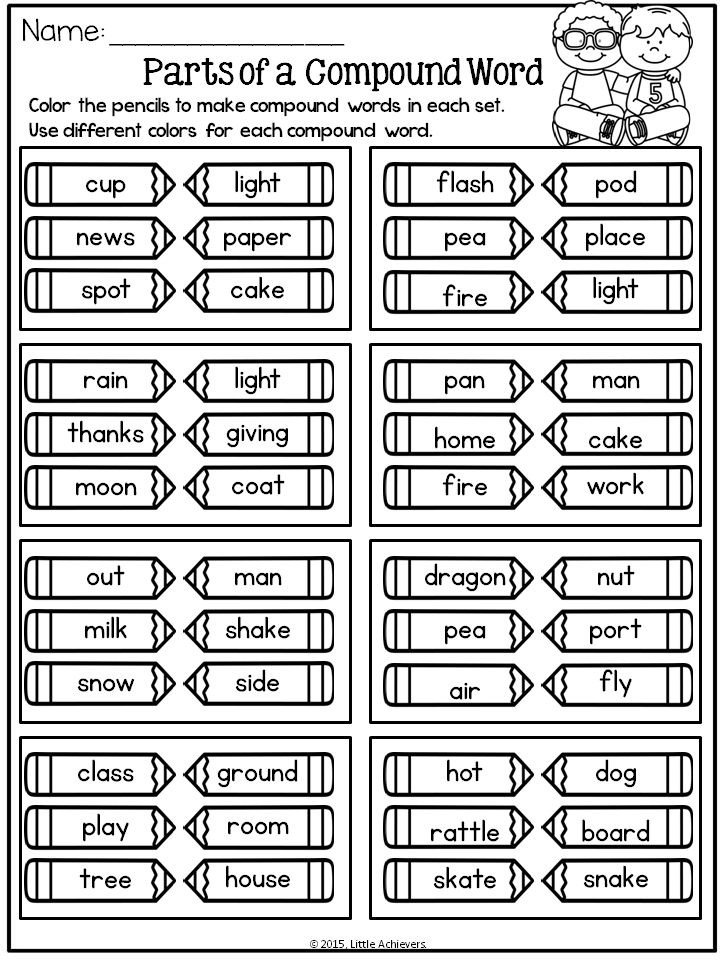
For those students who need a little more of a challenge, there’s a sheet with just blanks. This sheet encourages kids to think more deeply and create their own words using the simple words that are available.
Quick tip: To challenge your students, give them the blank answer sheet without any words to cut out and have them create as many compound words as they can on their own. They will write the two simple words in the blanks and the compound word at the end.
5. Create & Sketch a Compound Word
This activity brings the element of illustration into creating compound words. Your kids will write 4 compound words and illustrate those words in the boxes.
As with the other activities, there are two different versions. One includes traceable words that will provide a prompt for the compound word and the other is blank to give your kids freedom to create any compound word they want.
Quick tip: Have your students draw 3 pictures per box.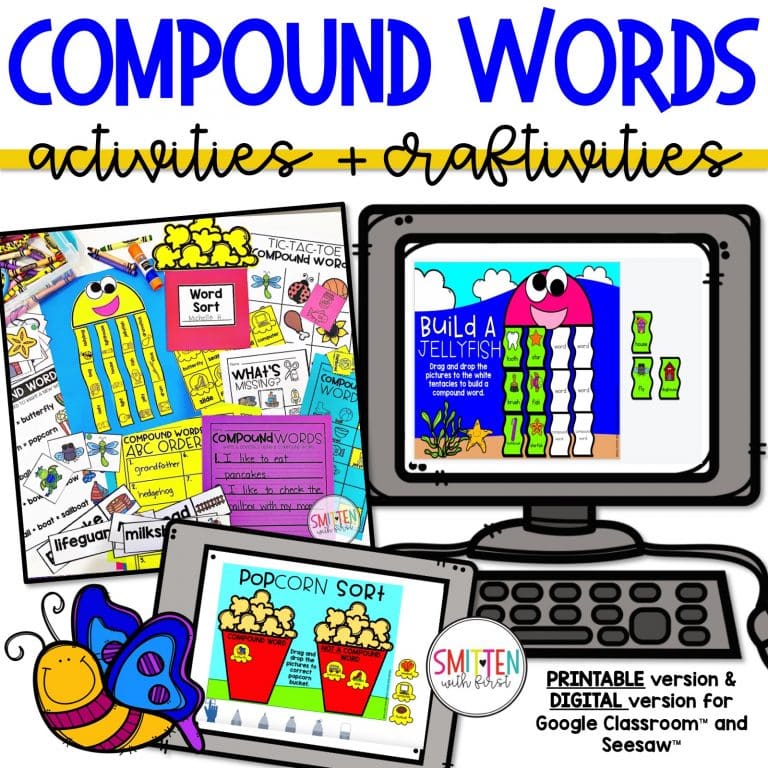 They will draw the simple words and the compound word to flex their artistic illustration muscles.
They will draw the simple words and the compound word to flex their artistic illustration muscles.
6. Compound Word Memory
This is the perfect activity to practice any skill. You simply lay all of the cards face down and try to find matches that will create compound words.
There are three different versions to meet the needs of your kids. The first is just like traditional memory. Players will simply find the same images to create a match.
In the second version, kids have to match the two pictures that create a compound word. The third version is designed for kids to find the two words that go together to make a unique compound word.
To help you with organization, each card has a number in the corner to indicate which group the cards belong in.
Quick tip: To make organization even simpler for you and your kids, print each version on different colored paper. This will make clean up a breeze while keeping all of the cards in the correct groups.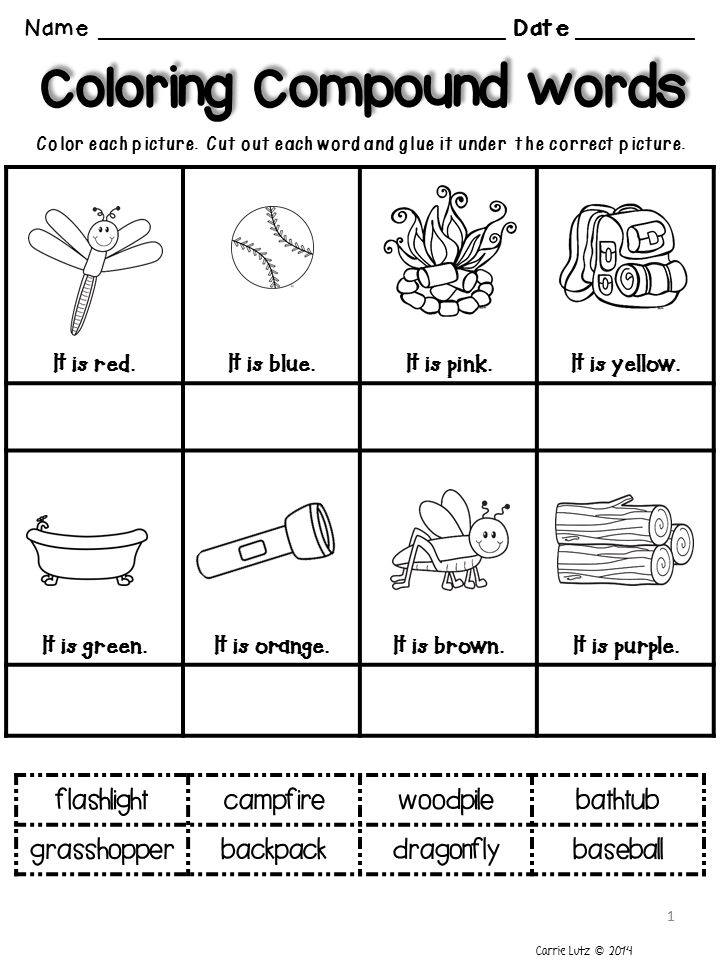
7. Add & Subtract the Compound Words
Kids enjoy activities that are cross-curricular or get them thinking about different subjects! And these activities are the perfect way to combine math and language arts.
Students will have the opportunity to stretch their addition and subtraction muscles by adding and subtracting compound words.
On the addition pages, your kids will add the two words to create the compound word. This reinforces the concept of addition and the “PART + PART = WHOLE” model. (There are two versions to meet the needs of your learners.)
On the subtraction pages, your kids will start with the compound word and then subtract one simple word to create the other simple word. This reinforces the subtraction model of “WHOLE – PART = PART.”
Using these activities to teach compound words and practice this important skill is vital to the success of your kids. They need ample opportunities to construct and deconstruct the words, and that is why I created this compound word activity pack.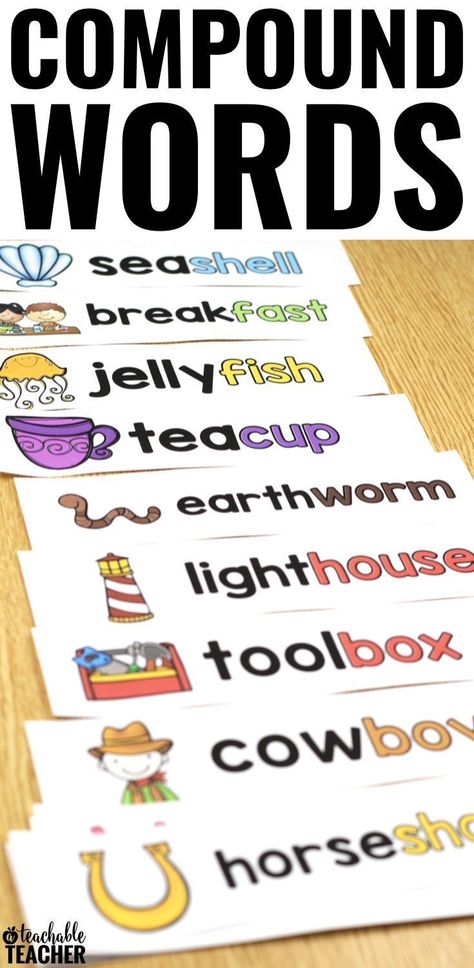
You will find EVERY activity from this post included in the activity pack. It’s the perfect stand alone bundle to teach compound words or an excellent addition to your language arts curriculum. Click here to see this compound word activity pack in my TpT shop!
| Ι. Organizing time.
II . Hatching, a minute of calligraphy. 1
II . Formulation of the topic of the lesson based on keywords. Group work. 1, 2, 4, 5 1, 3 1, 2, 4
Exercise for the eyes.
IV . Generalization and systematization of knowledge and skills. 3
Problem situation. 2, 3
Integration with the subject: the world around.
Fizminutka with music. Work according to the textbook. 3.5
Reading fairy tales about compound words. 3 , 3
V . Summary of the lesson. 1, 3, 4, 5 2 , 2
Hatching. 1, 2 Self-assessment. 5, 6, 7 | - Good morning! Look at each other and give your friend a smile. You will be fine in class today.
- With what work do we start the lesson of the Russian language? - Find the first letter on the given sheets, hatch, with that color (green, yellow, red), what is your mood at the beginning of the lesson? Lift up and show. - What can you say about these letters?
- In a minute of calligraphy, we will write this word - connecting. Open a notebook, write down today's date, "class work" and that difficult word "connection".
- Connecting vowels - this is the first combination of words that will be the key to our today's topic. Consult in groups and name other basic concepts.
- And now let's check if all the key concepts are listed (check on the slide)? - Using keywords, what are we going to work on today at the lesson? - Yes, today we will work with compound words, namely, on their spelling. - To begin further work, let's do a physical minute for the eyes.
- Look at the blackboard. What task do you think needs to be done? On slide: Nose image Ant nose Bron u Dik Tel Clean fight Beast horn - We complete the task in notebooks. We dictate the word spelling pronouncing, highlight the roots and orthograms. - What conclusion can be drawn?
- What else can you say about these words? - Why did these animals and plants get their names? - What else can you say about animals?
- And now let's go to the forest and do a physical exercise.
- They sat down quietly. We continue to work. Open your textbook on p. 113, find ex. 139. Read the task, how should they act?
- And now let's listen to your fairy tales about compound words.
- Remember the key concepts of our lesson, do they need to be supplemented? - Summarize the lesson with Phrase Starts: I found out... I was surprised... I was thinking... I repeated… I learned... I remember... - Hatch the second letter, show with the help of color what mood you are now. – Who got a mark in the diary today? For what? - Well done! Thank you for your work! |
- From hatching.
Children perform hatching.
- "o", "e" are vowels and are connecting vowels in compound words. Children are doing a task.
Children gather in groups and formulate the rest of the concepts of this topic. 1. Connecting vowels (o, e). 2. Compound words. 3. Two roots. 4. Hard and soft consonants before connecting vowels. Children express their assumptions. - With compound words, with a choice of writing connecting vowels ...
Children follow Sparkle with their eyes.
- Make compound words using these parts.
Children take turns dictating, doing tasks. Nose o ro g , ant d , armor e nose, porcupine z , clean o bodies, beast about fight. - Not all compound words can be connected by a connecting vowel, for example, anteater, porcupine. - These words can be combined into groups: animals and plants. Children express their assumptions. - These are rare animals, and therefore they are listed in the Red Book. Children read the words of a physical minute and perform movements.
Open textbooks, read the assignment. - Determine the common feature of the words of each group and exclude the "extra". 1. Saying - consists of one root. 2. Aircraft. Because the rest of the words are monosyllabic. 3. Explorer - consists of one root. Reading fairy tales "Rhinoceros", "Steam locomotive", "Starship".
- Yes, compound words without connecting vowels. Children express their opinion.
Perform hatching.
Give themselves a mark and justify it. | Cognitive UUD: 1) develop the ability to extract information presented in different forms; 2) present information in the form of a plan; 3) perform analysis and synthesis; 4) draw conclusions based on the analysis of objects; 5) build reasoning. Regulatory UUD: 1) independently formulate the topic of the lesson; 2) evaluate learning activities in accordance with the task; 3) draw up a plan for solving the problem; 4) work according to plan; 5) develop assessment criteria in dialogue with the teacher; 6) correlate the result of their activities with the goal and evaluate it; 7) carry out cognitive and personal reflection. Communication UUD: 1) develop the ability to listen and understand others; 2) express and justify their point of view; 3) formulate their thoughts orally; 4) negotiate and come to a common decision in joint activities. Personal results: 1) develop the ability to recognize and define our emotions; 2) evaluate actions in accordance with a certain situation; 3) we form an interest in learning the language.
TOOU |
Compound Verbal Predicate - Sample Sentences and Rules
Definition of Compound Verbal Predicate
Compound Verbal Predicate (CHS) is a predicate that consists of more than one word. The compound verb predicate consists of two parts:
The CGS rule looks like this:
compound verb predicate = auxiliary verb + infinitive
Scheme for constructing a compound verbal predicateMeanings of an auxiliary or linking verb:
-
Phase meaning, that is, the beginning, continuation, end of the action, namely:
start, become, launch, continue, finish, stay, stop, quit, stop and others.
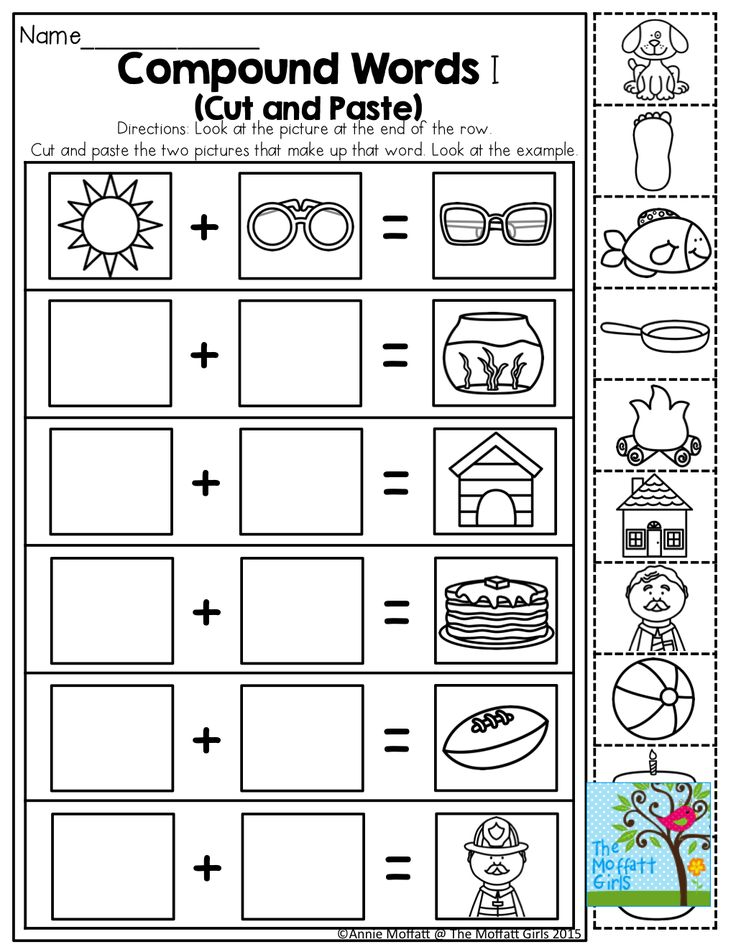
-
Modal meaning, that is, necessity, desirability, ability, predisposition, emotional evaluation of an action, namely:
to be able, to be able, to wish, to want, to dream, to intend, to refuse, to try, to try, to count, to be able, to contrive, to try, to suppose, to get used to, to hasten, to be shy, to endure, to love, to hate, to be afraid, to be afraid, to be cowardly, to be ashamed, to wonder purpose, burn with desire, have honor, have intention, make a promise, have a habit and others.
The auxiliary part of the compound verbal predicate can be a linking verb “to be” + short adjectives “glad”, “ready”, “must”, “must”, “intend”, “capable”, as well as adverbs and nouns with a modal meaning :
We collected in the table the main auxiliary verbs, as well as short adjectives and an example of phraseological units that can be included in a compound verbal predicate.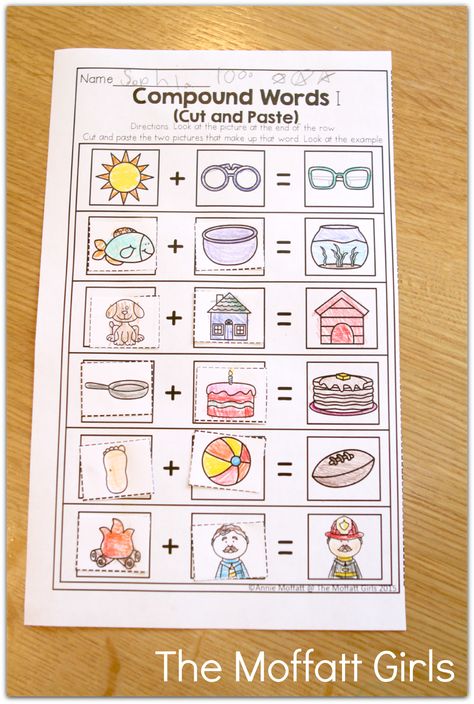
| Basic auxiliary verbs | Short adjectives as auxiliary verbs | Phraseological combinations | ||
|---|---|---|---|---|
| Start, end, continuation | Desirability, possibility, necessity of action | Emotional assessment of action | ||
| start become finish take continue terminate | be able to catch wish dream want try | love like hope be afraid to be ashamed prepare | rad must ready obliged worthy | (he) burns with impatience (to participate) |
Demo lesson in Russian
Take the test at the introductory lesson and find out what topics separate you from the "five" in Russian.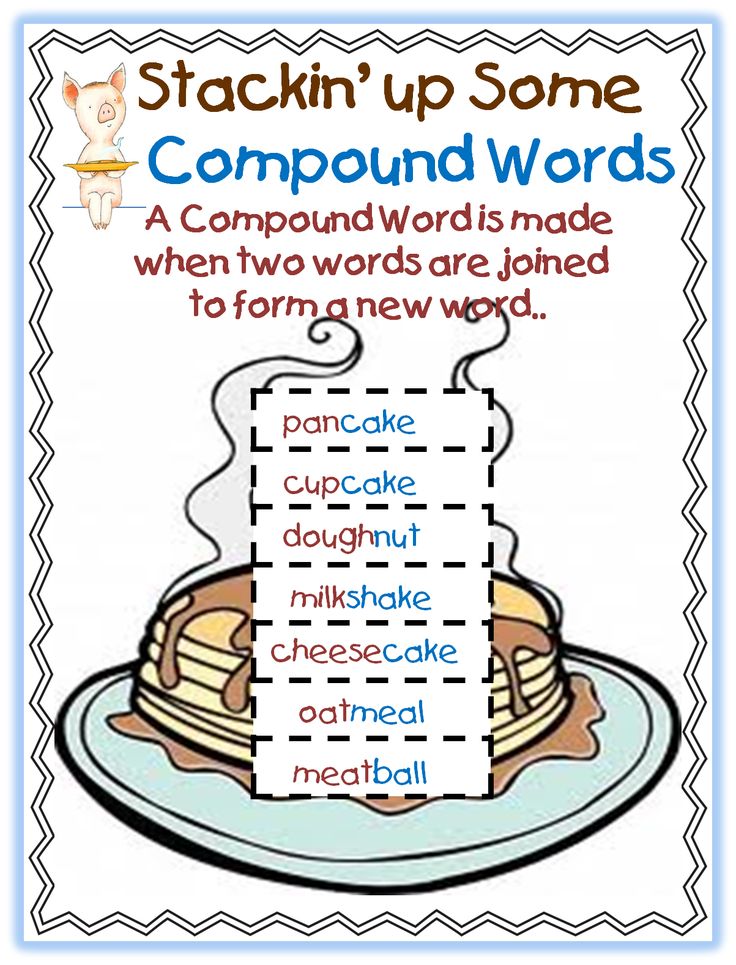
How to determine the compound verb predicate
-
The auxiliary verb must be lexically ambiguous, that is, it alone (without the infinitive) is not enough to understand what the sentence is about.
Example:
-
The action of the infinitive must refer to the subject.
If the infinitive refers to another member of the sentence, then we have not a compound verbal predicate, but a simple predicate and an objective infinitive.
Example:
Online Russian language courses at Skysmart School will help you practice new material.
Plan for parsing a compound verbal predicate
Scheme for parsing a compound verbal predicate:
-
Determine the type of predicate - “compound verbal predicate”.
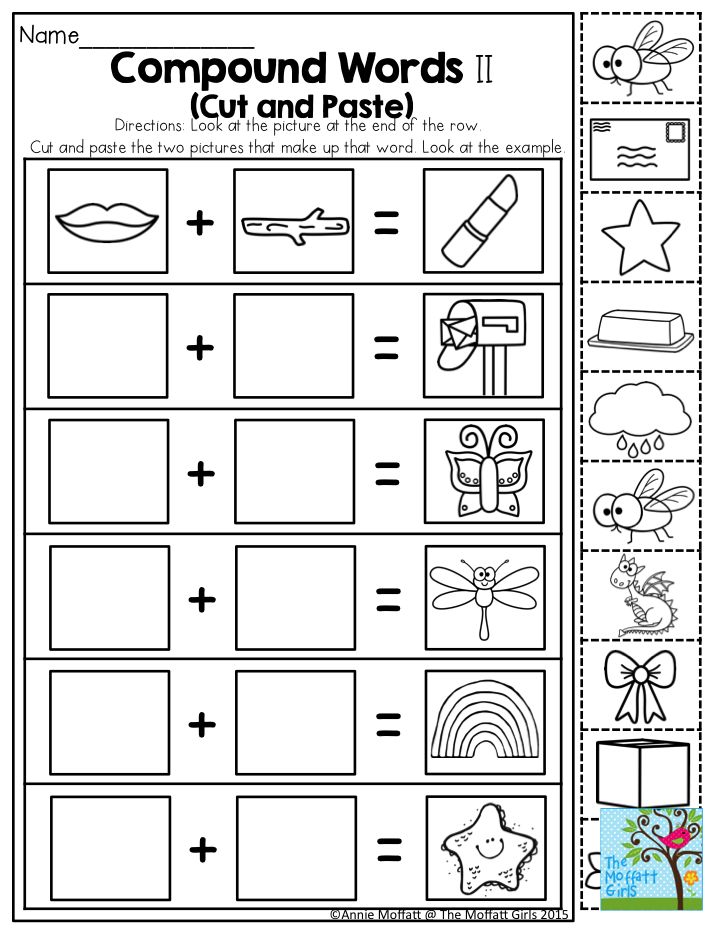
-
Indicate how the main part is expressed - "infinitive".
-
Indicate what form of the verb the auxiliary part is expressed.
-
Determine what value the auxiliary part has (phase, modal).
It's so easy! And now let's move on to practice.
Free English lessons with a native speaker
Practice 15 minutes a day. Learn English grammar and vocabulary. Make language a part of life.
Example of parsing a compound verbal predicate
Examples of parsing the CGS:
Example 1
Began to run - a compound verbal predicate.
The main part (to run) is expressed in the infinitive. The auxiliary part (beginnings) has a phase meaning and is expressed by the verb in the form of the past tense of the indicative mood.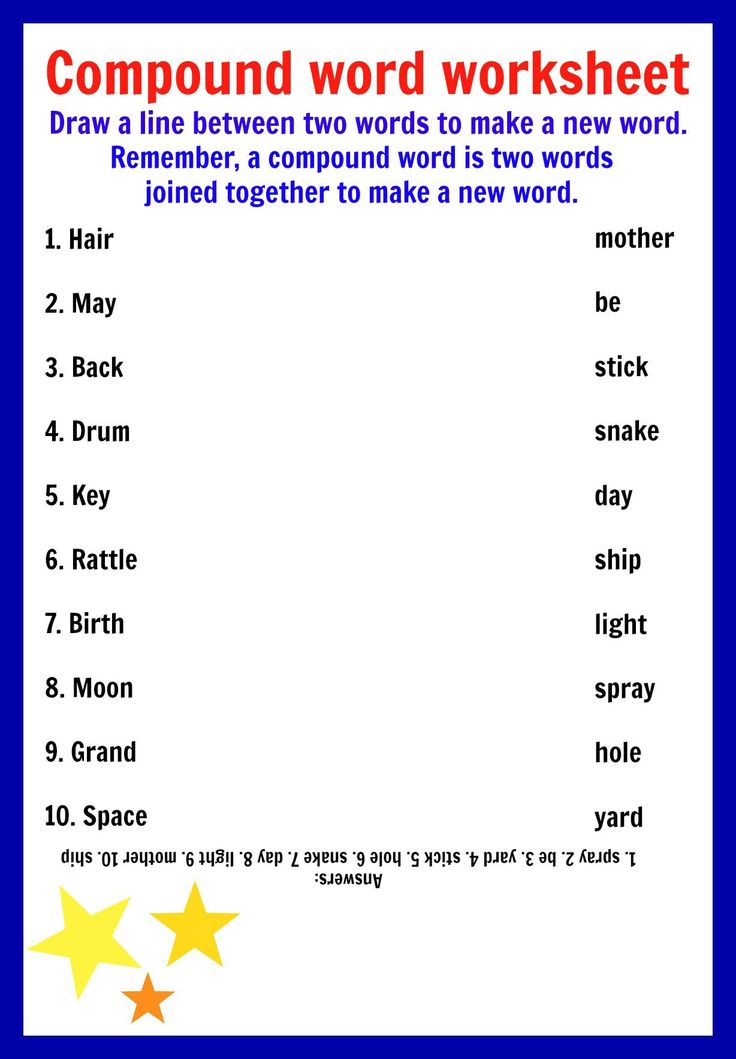
Example 2
I didn’t have time to say hello - a compound verb predicate.
The main part (to say hello) is expressed in the infinitive. The auxiliary part (succeeded) is expressed by the verb in the past tense and has a phase meaning.
Example 3
They started knocking - a compound verb predicate.
The main part (to knock) is expressed by the infinitive. The auxiliary part (started) is expressed by the verb in the past tense and has a phase meaning.
Complicated cases of expression of compound verbal predicate
The CGS can include such cases in which instead of a conjugated modal verb there is a set phrase. Often they combine a modal verb and a noun. For example:
-
Had an intention = intended.
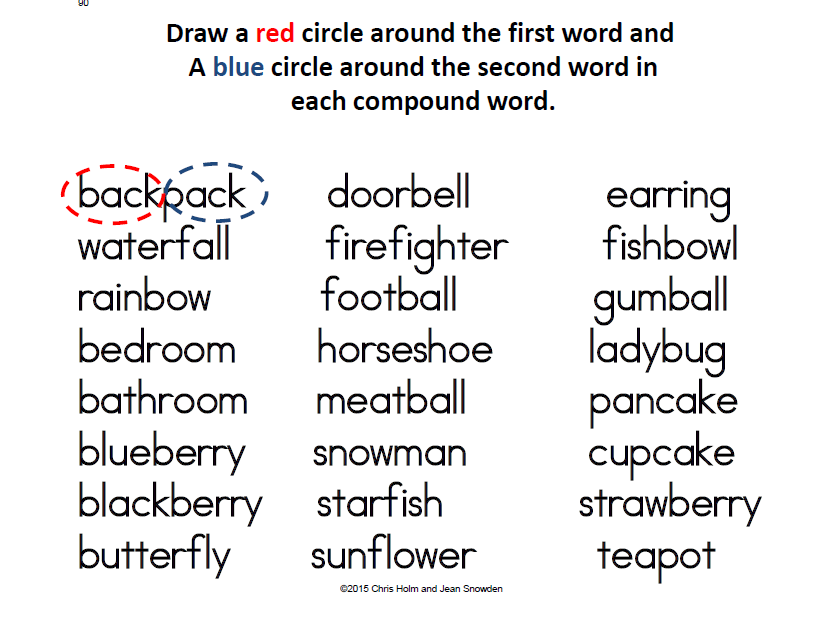
Learn more

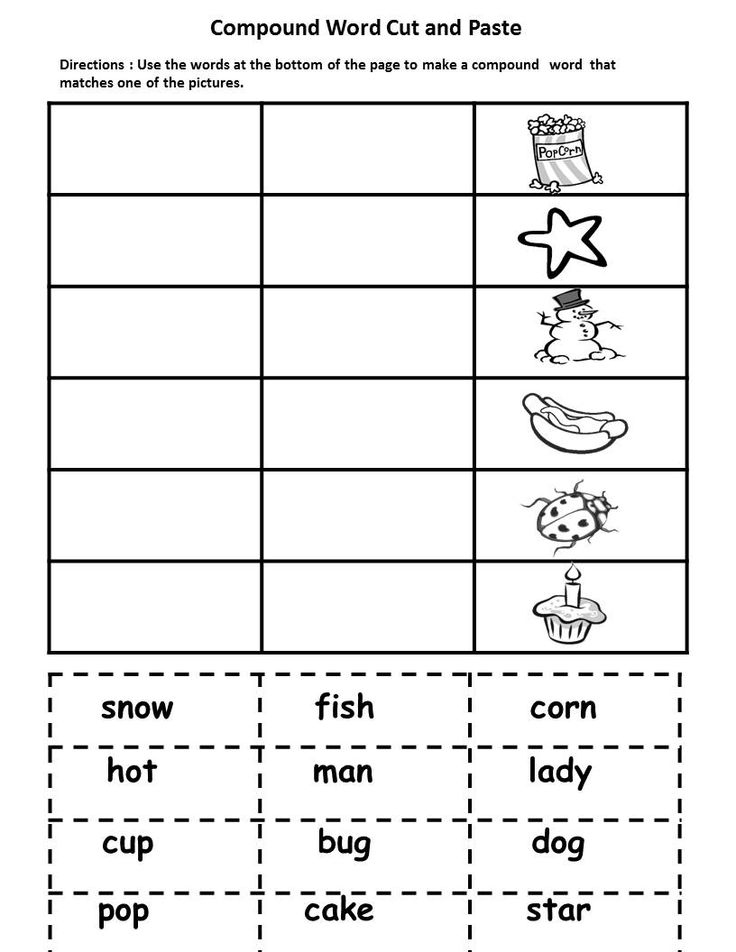
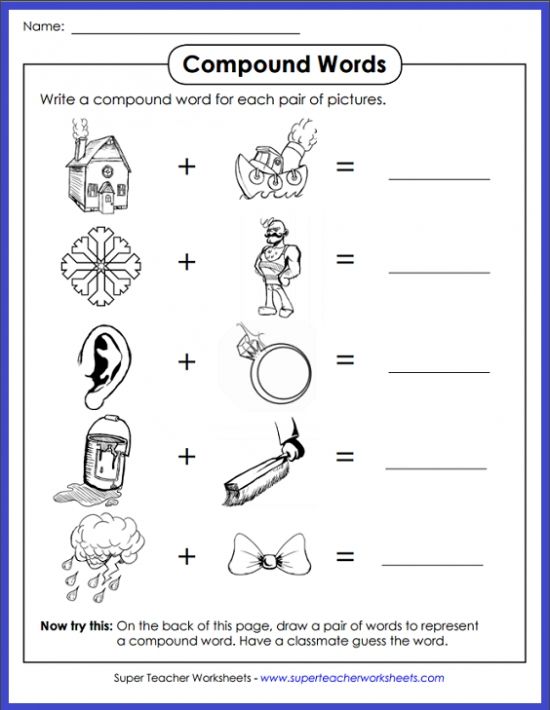 Reflection.
Reflection. 